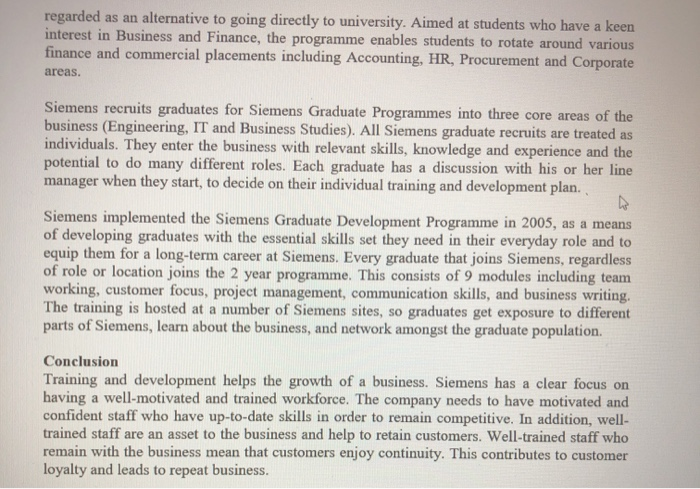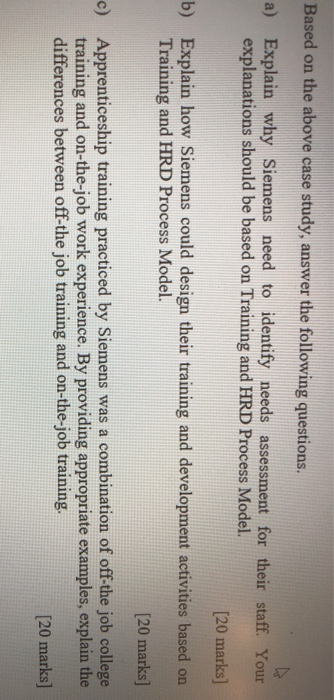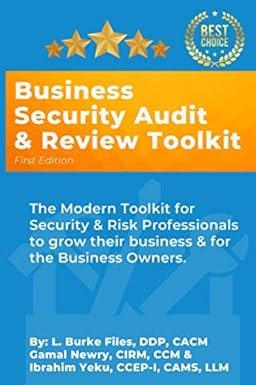1. Siemens Case Study - Training and development as a strategy for growth Introduction Siemens is a leading technology business and one of the largest electrical and electronics engineering companies in the world. In the UK, it employs over 20,000 people and is in the top three electrical and electronics companies in the world. It has been a pioneer in innovation since 1843 when Siemens installed the first street light in Godalming, Surrey. In 2006, Siemens UK invested over 74.4 million on research and development. The company designs and manufactures products and services for both industrial customers and consumers. It operates in three main sectors which is industry, energy and healthcare. To keep its world-leading position and grow in a competitive environment, Siemens aims to deliver quality products and services. To do this, it needs people with first class levels of skill, knowledge and capability in engineering, IT and business. The size and varied nature of its business means that Siemens requires many different types of people to fill a wide range of roles across the company. These include skilled factory workers, trade apprenticeships, designers and managers. This case study explores how Siemens manages its ongoing need for skills through training and development. Identifying Training Needs For a business to be competitive, it is important that it has the right number of people with the right skills in the right jobs. Workforce planning enables Siemens to audit its current staff numbers and the skills it has in place as well as identify where it has skills gaps needed to meet its business objectives. For instance, Siemens is relocating its main plant in Lincoln to a bigger site outside the main city. This will require new skills for the work to be done there. A plan has been constructed to analyse which skills the company has and what training will be needed for staff to use the new technology in the new location. Training and Development Programmes Training involves teaching new skills or extending the skills employees already have. There are two forms of training (on-the-job training and off-the-job training). As well as induction training, where new employees learn the basic information they need to begin working. Siemens has three main development programmes (Apprenticeships, Siemens Commercial Academy, and Siemens Graduate Programmes) designed for 'Entry Level Talent' i.e. those beginning their career with Siemens after education. Siemens offer a variety of technical apprenticeships, aimed at school leavers who want to 'earn as they learn'. Apprentices can join a variety of engineering/IT apprenticeships across a variety of locations in the UK, although the majority start their working life from their home tamen werline at their loanl Siemene cite Annrantisochin teninindi combination of off the e regarded as an alternative to going directly to university. Aimed at students who have a keen interest in Business and Finance, the programme enables students to rotate around various finance and commercial placements including Accounting, HR, Procurement and Corporate areas. Siemens recruits graduates for Siemens Graduate Programmes into three core areas of the business (Engineering, IT and Business Studies). All Siemens graduate recruits are treated as individuals. They enter the business with relevant skills, knowledge and experience and the potential to do many different roles. Each graduate has a discussion with his or her line manager when they start, to decide on their individual training and development plan. Siemens implemented the Siemens Graduate Development Programme in 2005, as a means of developing graduates with the essential skills set they need in their everyday role and to equip them for a long-term career at Siemens. Every graduate that joins Siemens, regardless of role or location joins the 2 year programme. This consists of 9 modules including team working, customer focus, project management, communication skills, and business writing. The training is hosted at a number of Siemens sites, so graduates get exposure to different parts of Siemens, learn about the business, and network amongst the graduate population. Conclusion Training and development helps the growth of a business. Siemens has a clear focus on having a well-motivated and trained workforce. The company needs to have motivated and confident staff who have up-to-date skills in order to remain competitive. In addition, well- trained staff are an asset to the business and help to retain customers. Well-trained staff who remain with the business mean that customers enjoy continuity. This contributes to customer loyalty and leads to repeat business. Based on the above case study, answer the following questions. a) Explain why Siemens need to identify needs assessment for their staff. Your explanations should be based on Training and HRD Process Model. [20 marks] b) Explain how Siemens could design their training and development activities based on Training and HRD Process Model. [20 marks] c) Apprenticeship training practiced by Siemens was a combination of off-the job college training and on-the-job work experience. By providing appropriate examples, explain the differences between off-the job training and on-the-job training. [20 marks] 1. Siemens Case Study - Training and development as a strategy for growth Introduction Siemens is a leading technology business and one of the largest electrical and electronics engineering companies in the world. In the UK, it employs over 20,000 people and is in the top three electrical and electronics companies in the world. It has been a pioneer in innovation since 1843 when Siemens installed the first street light in Godalming, Surrey. In 2006, Siemens UK invested over 74.4 million on research and development. The company designs and manufactures products and services for both industrial customers and consumers. It operates in three main sectors which is industry, energy and healthcare. To keep its world-leading position and grow in a competitive environment, Siemens aims to deliver quality products and services. To do this, it needs people with first class levels of skill, knowledge and capability in engineering, IT and business. The size and varied nature of its business means that Siemens requires many different types of people to fill a wide range of roles across the company. These include skilled factory workers, trade apprenticeships, designers and managers. This case study explores how Siemens manages its ongoing need for skills through training and development. Identifying Training Needs For a business to be competitive, it is important that it has the right number of people with the right skills in the right jobs. Workforce planning enables Siemens to audit its current staff numbers and the skills it has in place as well as identify where it has skills gaps needed to meet its business objectives. For instance, Siemens is relocating its main plant in Lincoln to a bigger site outside the main city. This will require new skills for the work to be done there. A plan has been constructed to analyse which skills the company has and what training will be needed for staff to use the new technology in the new location. Training and Development Programmes Training involves teaching new skills or extending the skills employees already have. There are two forms of training (on-the-job training and off-the-job training). As well as induction training, where new employees learn the basic information they need to begin working. Siemens has three main development programmes (Apprenticeships, Siemens Commercial Academy, and Siemens Graduate Programmes) designed for 'Entry Level Talent' i.e. those beginning their career with Siemens after education. Siemens offer a variety of technical apprenticeships, aimed at school leavers who want to 'earn as they learn'. Apprentices can join a variety of engineering/IT apprenticeships across a variety of locations in the UK, although the majority start their working life from their home tamen werline at their loanl Siemene cite Annrantisochin teninindi combination of off the e regarded as an alternative to going directly to university. Aimed at students who have a keen interest in Business and Finance, the programme enables students to rotate around various finance and commercial placements including Accounting, HR, Procurement and Corporate areas. Siemens recruits graduates for Siemens Graduate Programmes into three core areas of the business (Engineering, IT and Business Studies). All Siemens graduate recruits are treated as individuals. They enter the business with relevant skills, knowledge and experience and the potential to do many different roles. Each graduate has a discussion with his or her line manager when they start, to decide on their individual training and development plan. Siemens implemented the Siemens Graduate Development Programme in 2005, as a means of developing graduates with the essential skills set they need in their everyday role and to equip them for a long-term career at Siemens. Every graduate that joins Siemens, regardless of role or location joins the 2 year programme. This consists of 9 modules including team working, customer focus, project management, communication skills, and business writing. The training is hosted at a number of Siemens sites, so graduates get exposure to different parts of Siemens, learn about the business, and network amongst the graduate population. Conclusion Training and development helps the growth of a business. Siemens has a clear focus on having a well-motivated and trained workforce. The company needs to have motivated and confident staff who have up-to-date skills in order to remain competitive. In addition, well- trained staff are an asset to the business and help to retain customers. Well-trained staff who remain with the business mean that customers enjoy continuity. This contributes to customer loyalty and leads to repeat business. Based on the above case study, answer the following questions. a) Explain why Siemens need to identify needs assessment for their staff. Your explanations should be based on Training and HRD Process Model. [20 marks] b) Explain how Siemens could design their training and development activities based on Training and HRD Process Model. [20 marks] c) Apprenticeship training practiced by Siemens was a combination of off-the job college training and on-the-job work experience. By providing appropriate examples, explain the differences between off-the job training and on-the-job training. [20 marks]









